|
Baird experimental system described.
On July 27th a very great advance in television technique was demonstrated by Mr J L Baird at his laboratories in Sydenham. Here for the first time was shown television in natural colours, using at the receiver a cathode-ray tube. It gives the writer much pleasure to be able to place before the readers of Wireless World the details of the apparatus employed.
Before doing this it is necessary to state that some section of the public will no doubt be thinking that this new advance will cause a change to be made in the normal television service and possibly put off purchasing a television set until such time as it is possible to have one which will give coloured pictures. This idea should be killed at once. The apparatus used by Mr Baird is of a totally different type to that employed by the BBC and at present can only be considered as a very successful experiment which may in the near future be used for cine-television, but which will certainly not be introduced into the normal television service for many years.
Before dealing with the apparatus in question it may be of interest to readers to review some of the other demonstrations of colour television that have been given by Mr Baird and see the manner in which the present apparatus has been evolved.
It will come as a shock to many readers to learn that colour television was first demonstrated as early as 1928, when Mr Baird showed the transmission and reception of simple television images in colour to members of the British Association at the annual meeting held in Glasgow. The fact that this experiment made use of a line instead of wireless for the transmission channel does not detract in any way from the greatness of the achievement.
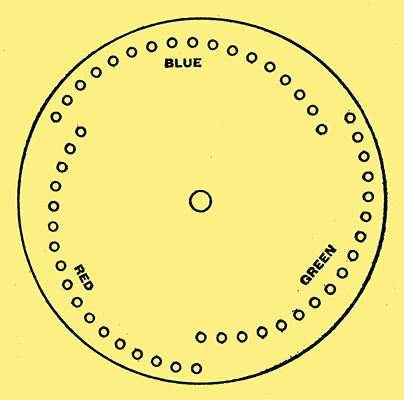
Fig. 1.The three-colour scanning disc used in early experiments.
The apparatus employed consisted of a modified form of scanning-disc type spotlight scanner at the transmitting end in conjunction with similar gear at the receiving end. The difference between the then conventional spotlight scanning system and the one here described being that instead of the disc having only one set of scanning apertures arranged in spiral formation, it had three sets, one set being covered with a red, another with a blue and the third with a green filter. Fig. 1 shows this disc, and it can be seen from this that the object was scanned three times in one revolution of the disc, each time with a different colour, so that the object was scanned first by a red spot, then by a blue and then a green. In this manner three images were obtained corresponding to the red, blue and green components of the picture. At the receiving end a similar disc was arranged to revolve in synchronism with the transmitting disc. Behind the disc were arranged glow discharge lamps, modulated by the incoming signal from the transmitter. Since at the transmitter an image representing the red, blue and green components of the scanned object were transmitted in order, then, at the receiver, since these images were viewed through similar filters in the same order and speed, then the viewer saw a picture in a combination of the three primary colours from which, as is generally known, most colours and colour tones may be obtained.
The picture so obtained was, of course, exceedingly small, about two inches square, and owing to the low period of scanning suffered from a marked flicker, but, nevertheless, it constituted a noteworthy step in the right direction.
In February, I938, ten years after the experiment described above, a demonstration of colour television was given at the Dominion Theatre. Again a mechanical system was employed, but of a greatly modified form. A new system of scanning also was used, and this is of sufficient interest for the writer to spend a little time in describing it. Interesting not only because it was employed in the apparatus to be described, but also because in the opinion of several people this form of scanning has great possibilities for the future.
Multi-mesh Scanning
The multi-mesh system of scanning is not entirely new; in fact, it was being used by Mr Baird in his very early experiments as far back as 1923, but was not carried on with, since the scanning gear became too complicated to merit its use in a television apparatus of the very low definition then employed. With advances in technique that have been made in latter years, it has become possible once more to turn to this form of scanning and make use of its many advantages over the normal straight and interlaced systems.
The system of scanning is such that a secondary field is formed, which is composed of a number, two or more, of primary scans interlaced. The secondary scan is then repeated a number of times, each time being displaced. As an example, let us take the scanning standard as used in the Dominion demonstration. This consisted of two 20 line scans intermeshed to form a 40 line scan, this being the secondary field. The secondary field was then repeated three times, each time being laterally displaced in order to interlace with the other fields so that a final scan of 120 lines was obtained. The following are the advantages that are claimed for this form of scanning over the conventional forms:
- The frame frequency is considerably higher, since it is the frequency of the primary 20 line, scan, resulting in a permissibly higher low-frequency cut-off for the communication channel.
- A reduction in flicker is effected.
- A considerable increase in light efficiency may be obtained by using a scanning spot such that the secondary scan completely fills the field. By doing this there is a relatively small loss in definition.
- It is possible to employ an optical system of great simplicity and exceedingly high efficiency.
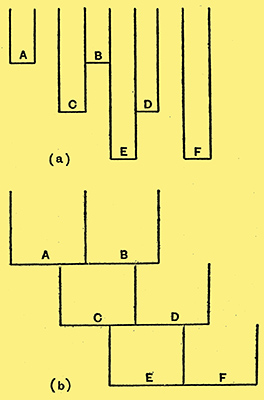
Fig. 2. This diagram illustrates the arrangement of multi-mesh scanning.
The method in which the scan is arranged may be seen from Fig. 2. The method employed at the Dominion can be most easily understood in conjunction with the diagram; Fig. 3.
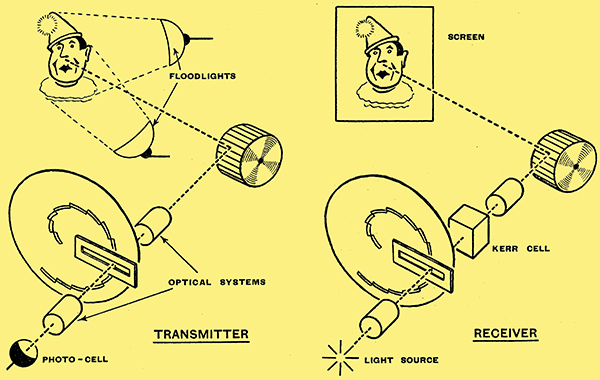
Fig. 3. The layout of apparatus at transmitter and receiver for colour television when mechanical methods are used at both ends.
At the transmitter there was a slow-speed slotted disc together with a high-speed mirror drum. The subject was floodlit and scanned by the combination disc and drum arrangement, the respective speeds of which were 500 and 6,000 revolutions per minute. The disc was provided with twelve slots arranged in the form shown in the diagram, alternate slots being covered with red and blue-green filters. The mirror drum used had twenty mirrors and threw an image of the scene being transmitted on to the disc, the combined action producing a 120-line scan composed in the manner described in the section dealing with multi-mesh scanning. The photo-electric cell used in this gear was one in which the sensitive surface was composed of rubidium, a material which approaches the human eye in characteristic although infra-red had to be filtered out before good results could be obtained. This is due to the fact that different coloured objects may reflect the same amount of infra-red which would make them appear the same when a cell sensitive to that form of radiation was used. The receiver used in conjunction with the transmitter just described will be seen also in Fig. 3; the process of building up the picture being an exact reversal of that employed at the transmitting end. A high-intensity arc lamp replaces the photo-electric cell, and the light, after passing through the scanning disc, is modulated by a large Kerr-cell. The disc is identical to that used for transmission, so that when the red component of the picture is received the light is passed through its appropriate portion of the colour combination on the disc. The receiver screen is then scanned by a mirror drum, again of similar type to that employed at the transmitter.
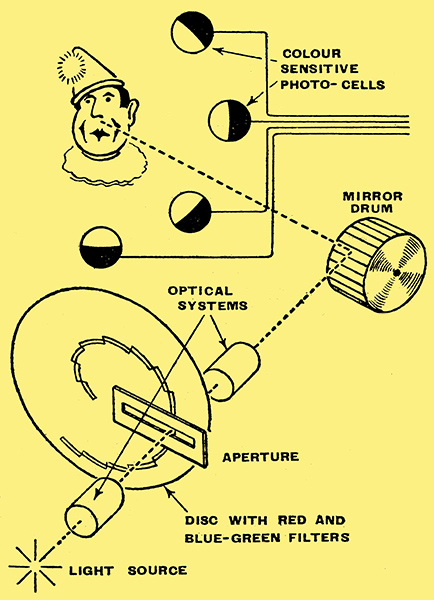
Fig. 4. This drawing illustrates the transmitting system used in the recent demonstration. Spotlight scanning is employed.
The apparatus used for the demonstration on July 27th, as far as the transmitting side goes, was similar to that just described except for the fact that the method of spotlight scanning was employed. Fig. 4, will show the broad outlines of the arrangement in which, instead of an image of the subject being thrown on to the disc, the subject is scanned with light spots of varying colour according to the filters on the disc, the light reflected from the subject being picked up by colour sensitive cells. The drum used has thirty-four facets and revolves at a speed of 6,000 revolutions per minute.
The great advance that has been made in the apparatus is that a cathode-ray tube is used at the receiving end. Hitherto, the mechanical gear employed has been exceedingly cumbersome and prone to mechanical breakdown, whereas with the cathode-ray tube both these disadvantages have been done away with. The arrangement of the apparatus will be seen by reference to Fig. 5.
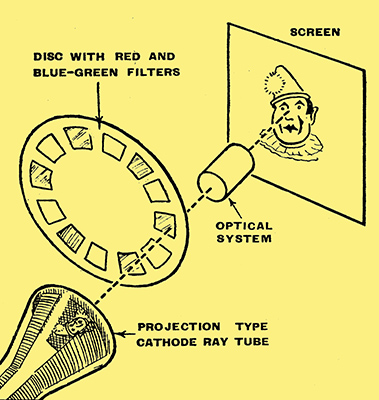
Fig. 5. The receiving equipment is shown here. The colour-disc rotates in front of the cathode-ray tube.
A normal projection cathode-ray tube, similar to that employed in the apparatus installed in several London cinemas, may be used. In front of this tube there is arranged a disc with apertures covered by the same filters as those used on the transmitting disc. The picture viewed through this disc consists of a 102 line blue-green picture superimposed upon a 102 line red picture, the net result being a 102-line picture in natural colours. The frame frequency of the picture is 16.66 per second. The size picture shown was 3 ft square approx. This does not constitute the limit of picture size, but was convenient for the size laboratory in which it was shown. Neither does the fact that the transmission was from the Crystal Palace, only two miles away, imply that the system has only a limited range.
It cannot be too strongly emphasised that the above described demonstration must be looked upon as an experiment at present, and it can be stated with complete assurance that there is no likelihood of any alteration being made in the official service for some time to come. This does not, in the writer's opinion, mean that no use will be found for this system of colour television, since the demonstration showed clearly the potentialities of the apparatus for large screen work in cinemas and the like.
|